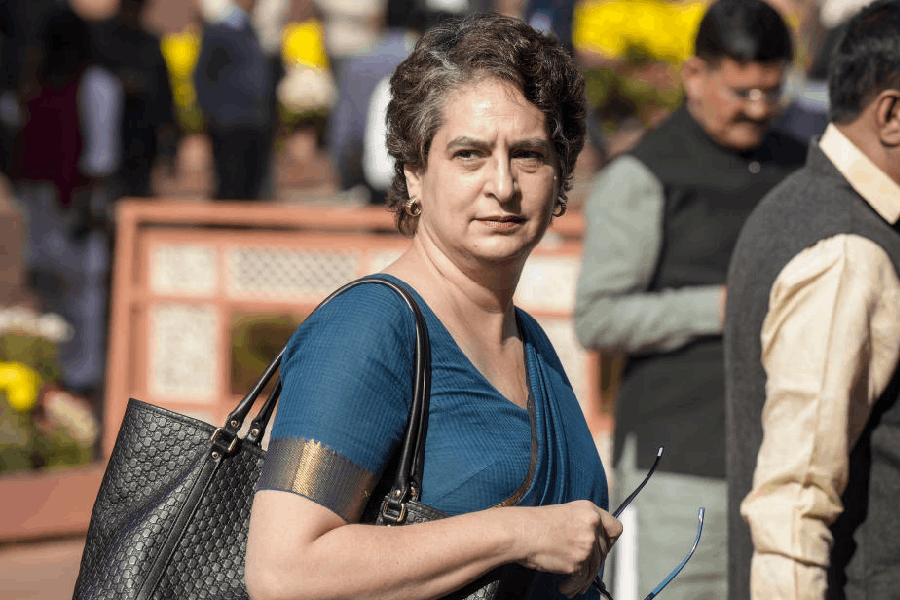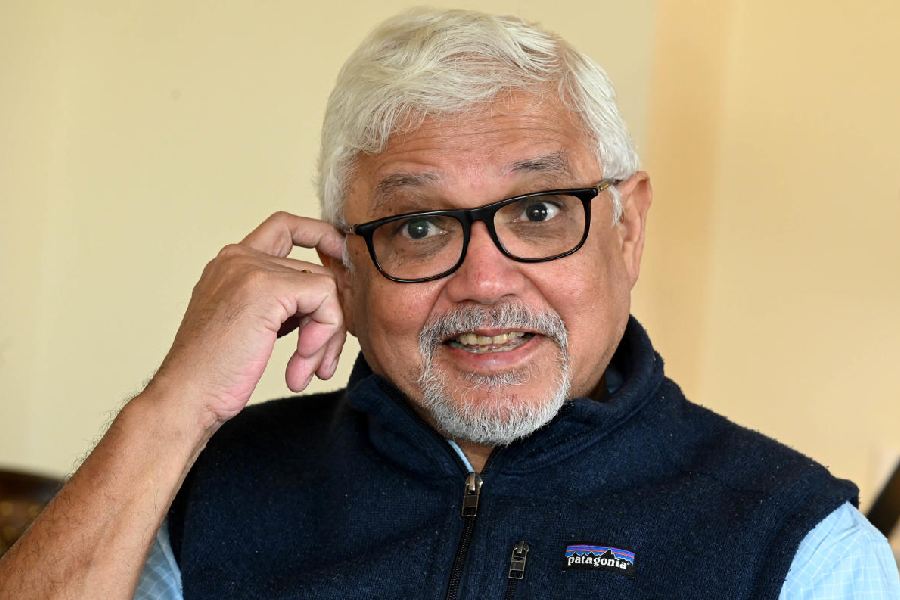|
|
Of all the Heramba Maitra stories, whether salacious or libellous, the one I like best is about his two small wards who mixed up their tram tickets. Since each ticket was printed “Not transferable”, Heramba Maitra threw away the old ones, bought two more, gave one to each boy and placed them on either side of him with firm instructions not to budge.
He was a good man. So is Gopal- krishna Gandhi. He would not otherwise have felt “anguish” over Nandigram or dared to say so. I have known a state governor swilling whisky with the chief minister while reporting against him to the Centre. Obviously, that is not Gandhi’s way. It would not have been that of the legendary City College principal either. But Heramba Maitra was rigid, and it was his rigidity that made him the butt of so many jokes. There was an element of truth in them. Swami Shuddhananda, Sudhirchandra Chakravarty in pre-monastic life, recalled that Heramba Maitra took him to task for coming to class from yoga lessons barefoot and with a shawl over his naked torso. The principal thought it uncultured.
The reason for this comparison is the report in a Singapore newspaper of the governor turning down an invitation to head the Gujarat Vidyapeeth because he is “not a 100 per cent khadi user”. Reportedly, he said he wears “a lot of khadi, but also other fabrics such as woollens and handlooms.” Had I a Gandhi cap to doff, I would have doffed it in salute to his honesty. Though having said that, I am glad I don’t. It occurred to me when the censors ordered Utpal Dutt to re-shoot some sequences in Ghoom Bhangar Gan, which showed the villain wearing a Gandhi cap, that only a very fragile symbol can need such protection. Be that as it may, Gandhi’s diligent adherence to the letter of the Vidyapeeth constitution deserves respect. But letter and spirit not always being synonymous, it may be asked whether greater flexibility might not have better served the cause of swarajist education to which Mohandas Karamchand Gandhi dedicated the institution.
As they say, you don’t teach your grandmother to suck eggs. Similarly, you don’t teach a man about his grandfather. But three episodes illustrating Mohandas Gandhi’s pragmatism come to mind. First, Rajabali Jumabhoy, a Kutchi Singaporean businessman who would have been about 110 years old had he been living, recorded flagging down Gandhi’s car in Bombay to ask, “Mahatma, you are preaching boycott of British manufactured goods, why are you travelling in a British manufactured car?” Gandhiji promptly replied, “Yes, if cars were manufactured in India, I would not sit in such a car, but as I have to go here and there very quickly, I have to utilise this motor-car instead of a bullock cart.”
Second, Ranjit Chetsingh, a leading Indian Quaker, criticised “that great pacifist Gandhi” for “exhorting the Indian troops in Kashmir to be prepared to die for their country”. The third instance is from Richard Symonds, an English Quaker who accompanied Horace Alexander to India. Gandhi had him moved to Birla House to be nursed when the young Symonds contracted typhoid because the hospitals would kill him. Nurse and patient chatted about everything under the sun, and pressed by Symonds on prohibition, Gandhi agreed to make an exception on medicinal grounds of the heavy, dark beer called porter. His London landlady had made him gulp down porter when he was ill because old-fashioned English people regard it as a restorative. Gandhi thought porter too bitter to be enjoyable.
The now octogenarian Symonds regrets he can share his memories of the endearingly human Gandhi with so few Indians. A woman minister from the Congress burst into tears at one of his anecdotes. It did not square with her image of the Mahatma. Myth in India is stronger than reality. A second visit to Birla House, long after Independence, confirmed that quirk. Earlier, Symonds had seen and admired the “simple and charming scenes taken from Gandhi’s autobiography” among the murals outside the building. One showed him wearing a tail-coat and playing a violin. In another, he is “dancing with a lady of dubious respectability”. They had gone when Symonds went back to Delhi. Our politicians had decided that a national icon had to be solemn. Dancing was for the flippant chattering classes. Not for saints in loincloths. The loin-cloth image, more rewarding for political mythology, had to be reinforced. “It was sad to see the Mahatma treated with such ponderous lack of imagination,” Symonds lamented.
At the Sabarmati ashram, he noticed “portly visiting businessmen” — undoubtedly devout Gandhians — who found the communal meals so bland that they could be found “stoking up secretly behind bushes on biscuits and chocolates sold by cycling pedlars who would also purvey illicit cigarettes”. That was better, perhaps, than a Congress politician I encountered once in Trivandrum who had been sent by the high command to decide between two rival contenders for the mantle of pradesh committee chief. The emissary prefaced all his comments with “As a Gandhian, I would say…” The following week I ran into him, tottering and garrulous drunk, in the bar of Bangalore’s West End Hotel. To compound comedy, he kept repeating that “as a Gandhian” he would give away no party secrets just because he was accepting a drink from a journalist.
Khadi also encourages fantasy. As high commissioner to Britain when I was a student there, Vijayalakshmi Pandit told us that though she no longer found it necessary to wear only khadi, she wore nothing but desi. Some sniggered that since she was so often in chiffon, perhaps France was her desh. There was no handsome fund then from Switzerland’s Volkart Foundation to promote fine khadi. Nor had those smart not-so-young entrepreneurs — Rohit Bal, David Abraham, Rajeev Sethi and Martand Singh — started dabbling in fashionably expensive khadi in brilliant hues. Mohandas Gandhi — “There is no such thing as Gandhism” — would have dismissed them as “simply following fashion”. Quality didn’t matter to him. When women complained that khadi was coarse and unattractive, Gandhi replied he had never known a mother throw away her baby because it was ugly.
He was a politician: he could make rules and invoke a higher cause to claim dispensation from them. Khadi was not an end for him. It was the means to the end of self-sustainability, “the first indispensable step towards the discharge of swadesi dharma towards society”. He had no time for “men who wear khadi but in all other things indulge their taste for foreign manufactures with a vengeance”. His grandson is a civil servant. And civil servants (the good ones like him, not the corrupt brigade) are notoriously slaves to the rule-book.
But despite approving of devotion to authentic khadi with all its imperfections, would he have regarded Gopal Gandhi’s reason for rejecting the job as valid or only a technicality? That is the difference between Mohandas Gandhi and Heramba Maitra. The latter was a prisoner of virtue while the car, porter, Kashmir and other incidents show that the former did not make a fetish of belief. As for the decision, it really depends on the Gujarat Vidyapeeth’s current state and status, Gopal Gandhi’s opinion of it and his comfort level in the state’s political climate.
The report I read did not say whether the job would have been an avocation or vocation. The former might, perhaps, be considered but certainly not the latter, though for reasons that have nothing to do with what is crassly called Gandhigiri. West Bengal’s is the greater need for a good man “to advise, warn and encourage ministers” unless, of course, the incumbent is called to a higher duty in New Delhi.











